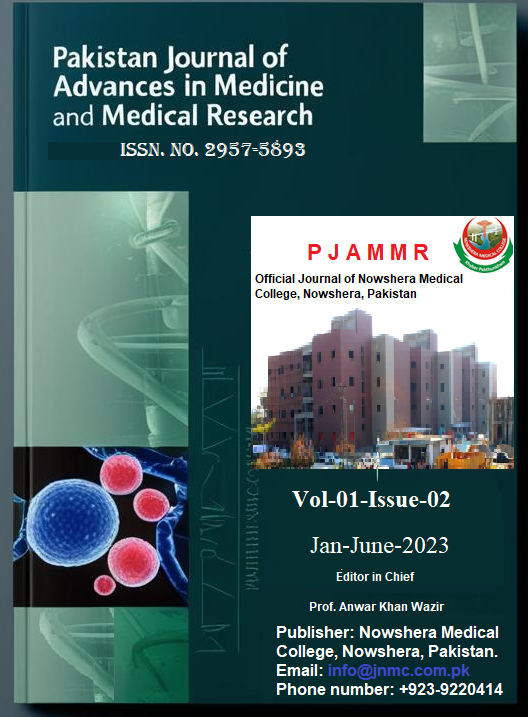Evaluation and Enhancement Of Adherence To The Use Of Tranexamic Acid In Total Knee Replacements Based On Nice Guidelines.
Quality improvement project
DOI:
https://doi.org/10.69837/pjammr.v1i02.52Abstract
Background: Tranexamic acid (TXA) is widely recognized for its role in minimizing perioperative blood loss, particularly in orthopedic procedures such as total knee arthroplasty (TKA). Its efficacy in reducing the need for transfusions and improving patient outcomes has been well documented. International guidelines, including those from the National Institute for Health and Care Excellence (NICE), recommend a multimodal approach incorporating intravenous and topical administration for optimal effect. However, adherence to these best practices in real-world clinical settings often remains suboptimal. This Quality Improvement Project (QIP) was conducted at CMH Abbottabad to assess current TXA administration protocols, identify barriers to compliance, and implement targeted interventions to enhance adherence to evidence-based recommendations.
Objective: This study aimed to assess the current practice of tranexamic acid (TXA) administration during total knee arthroplasty (TKA) at CMH Abbottabad and implement a quality improvement initiative to enhance adherence to NICE guidelines. By identifying gaps in compliance and addressing barriers to optimal TXA use, this project sought to standardize practice, improve patient outcomes, and minimize perioperative blood loss more effectively.
Methods: A two-cycle clinical audit was conducted at CMH Abbottabad from August 01 to October 30, 2022, to evaluate adherence to NICE guidelines regarding tranexamic acid (TXA) use in total knee arthroplasty (TKA). A total of 93 TKA cases were retrospectively analyzed to assess compliance. Between the two cycles, targeted educational interventions were introduced, including interactive presentations, email reminders, and strategically placed instructional posters within the orthopedic department. Data were extracted from operative notes, and statistical analysis was performed to measure the impact of these interventions on improving compliance rates.
Results: The first audit cycle at CMH Abbottabad revealed a 51.2% non-compliance rate with NICE guidelines for tranexamic acid (TXA) use in total knee arthroplasty (TKA). Following the targeted educational interventions, compliance significantly improved, with TXA utilization increasing from 48.8% to 73.1% (p = 0.016). As per guidelines, the adoption of combined topical and intravenous administration improved markedly from 7.3% to 30.8% (p = 0.005). Further subgroup analysis of the second audit cycle indicated higher compliance in non-tourniquet cases and better adherence to TXA use in patients with renal impairment, highlighting the effectiveness of focused interventions in optimizing perioperative blood conservation strategies.
Conclusion: Implementing targeted educational interventions significantly improved adherence to NICE guidelines for TXA use in TKA at CMH Abbottabad. This highlights the importance of structured training sessions and reinforcement strategies in optimizing perioperative blood management. Integrating TXA administration into preoperative surgical checklists and conducting regular educational sessions—particularly addressing its safety profile in patients with renal impairment—could enhance compliance further. Sustained efforts in awareness, protocol standardization, and multidisciplinary collaboration will be crucial for ensuring long-term adherence.
Keywords: NICE guidelines, quality improvement, re-audit, total knee arthroplasty (TKA), tranexamic acid (TXA), surgical blood management, perioperative care
Downloads
Published
How to Cite
Issue
Section
License
Copyright (c) 2023 Tahir Nawaz, Muhammad Awais Jamil said, Maria Saleem, Muhammad Abbas Khan

This work is licensed under a Creative Commons Attribution-NonCommercial 4.0 International License.






